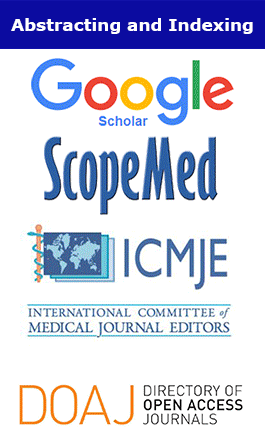Applied Medical Research. 2022;
9(2):(134-204)
Segmental Splenic Flexure Resection in Colonic Carcinoma: A Single Center Experience
Raffaele Porfidia*, Simona Grimaldi, Pietro Picarella, Maria Giovanna Ciolli and Sergio Grimaldi
Abstract
Aim: to evaluate the outcomes of segmental splenic flexure resection and to compare our experience with
the literature.
Materials and Method: Between April 2017 and May 2021, 18 patients with splenic flexure colon cancer
and not resectable endoscopically polyps, were enrolled in the study. We divided these patients into two
groups: Group A consisted of 5 patients with polyps of the splenic flexure of the colon defined as notresectable
endoscopically; group B consisted of 13 patients with splenic flexure cancers. All patients underwent
splenic flexure resection. We evaluated the pathological findings and outcomes of all patients, and
we compared our experience with three recent papers by Degiuli M et al, Wang X et al e di Rega D et al.
Results: In the group A: No post-operative complications. The postoperative histology confirmed highgrade
dysplasia in 4 cases. 1 case (20%) of intraglandular adenocarcinoma. The mean number of lymph
nodes removed was 8 (range 6-13). Endoscopic follow-up at 12 months was negative for all patients. Group
B: we had only one anastomotic leak (5.5%). The mean number of lymph nodes removed was 19.8 (range
13-31). Post-operative histology: 3 pT4aN1aM0 patients. 1 pT4bN2M1a patient with lung metastases, 3
pT3N0M0 patients, 3 pT3N1aM0 patients, 2 pT2N0M0 patients, and 1 pT1N0M0 patient. We had one
death after six months in a pT4bN2bM1a patient with lung metastases. One pT4aN1aMo patient showed
liver metastases after 12 months. 1 patient pT1N0M0 presented, after 28 months, intramucosal adenocarcinoma
of the hepatic flexure of the colon. 12-month follow-up not yet performed in 3 patients.
Conclusions: There is currently no recommendation on the best surgical approach for splenic flexure tumors.
According to our results, the partial resection of splenic flexure was not associated with a worse
prognosis, and it was leading to a satisfactory oncological outcome.



